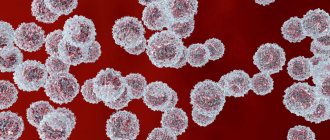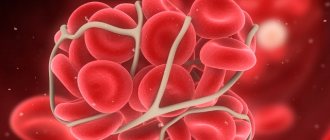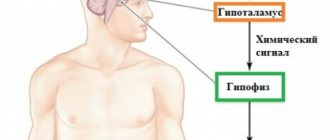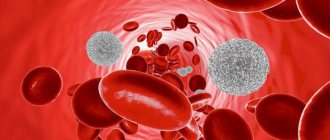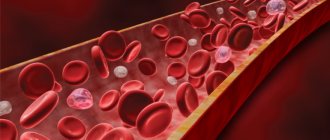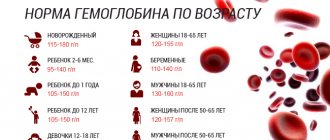Disorders of hematopoiesis, maturation and synthesis of formed cells represent a serious problem in the field of hematology and partially related fields of medicine. Often such disorders do not reveal themselves in any way from the point of view of the clinical picture. This makes it difficult for patients to seek help early. At the same time, such disorders can have catastrophic consequences; under certain conditions, changes cost health and even life.
Leukopenia is a decrease in the number of circulating leukocytes (white blood cells) below the conventional norm. A pathological condition that causes disorders of the immune system, lack of sufficient activity of the body's defenses, and therefore carries great risks.
There can be many reasons for low white blood cells in the blood, the majority of them are pathological, clearly pathogenic in nature, and therefore require treatment.
Recovery is not very difficult in most cases. However, it is necessary to start therapy as early as possible. Given the absence of any specific symptoms, significant problems arise with this.
A preventive approach, regular examinations, at least by a therapist with basic tests, helps to correct the situation.
The disorder has its own code according to ICD-10 and is considered an independent disease. D72 with postfixes clarifying the origin of the problem.
Development mechanism
Normally, white blood cells exist in two main forms in the body. Freely circulating ones form the backbone of the human immune system. The remaining ones are in a bound state, localized on the walls of blood vessels, due to which they can immediately respond to local threats.
Leukopenia, as a disorder, is accompanied by a deviation from one or both cellular structures.
There are several mechanisms, depending on the characteristics and primary cause of the problem.
Violation of the synthesis of leukocytes themselves
Observed as the main culprit. Units are produced in the bone marrow. If its tissues are damaged or altered in any way, there is a disruption in normal functioning and, as a result, the cells either are not synthesized in sufficient quantities or do not mature, remaining functionally incompetent and unable to perform work.
Such phenomena definitely require therapy; unfortunately, effective treatment is not always possible at all. Due to the characteristics of the primary cause.
Malignant blood diseases, as well as aplastic anemia and a number of other conditions, are especially unfavorable in this regard.
Impaired transport of white blood cells
Accompanied by a disorder in the movement of leukocytes along the riverbed. The result is a decrease in the rate of immune response that should occur.
Also, a clearly insufficient number of formed cells is detected during the analysis. Because they are deposited in tissues, but do not come out to fight an infectious or other agent.
Cell destruction under the influence of aggressive factors
These, for example, include the production of antibodies against the structures in question. This kind of problem occurs relatively rarely. The immune system begins to fight itself, which initially poses a great danger from the point of view of the patient’s condition; there are few leukocytes in the blood.
It is necessary to reduce the intensity of the false response of the defense forces. The sooner treatment is started, the higher the chances of recovery in a short time.
These disorders apply equally to all leukocytes. Be it neutrophils or others. This is the complexity and danger of the situation. The nature of the functional activity of the immune system changes, and significant problems arise. This is a risk to health and even life.
What are the symptoms of a decrease in leukocyte levels?
Often the patient does not experience any symptoms, and a decrease in the level of leukocytes is detected by the results of a general blood test. Some only note that they began to feel tired more often.
The main problem of patients with leukopenia is a decrease in the body's defenses. In them, even a mild infection can quickly become severe.
All main symptoms of leukopenia are associated with infectious complications:
- Temperature 38 degrees or higher.
- Sweating, chills.
- Mouth ulcers, toothache, sore throat.
- Itching, ulcers in the anal area.
- Stomach ache.
- Loose stools.
- Frequent urination, accompanied by pain and burning.
- Shortness of breath, cough.
- Swelling, redness, pain on the skin, especially in the area of wounds, cuts, venous catheters.
- Itching in the genital area in women, unusual vaginal discharge.
Classification
The division is carried out for several reasons. One of the options is based on the type of formed cells that are affected by the pathological process. In this case, the following types of violation can be distinguished:
- Leukopenia, changing the concentration of monocytes.
- Disorder of neutrophil synthesis or transport.
And so on, by cell type: lymphocytes, basophils and eosinophils.
This classification has great clinical significance. However, there is another one that is equally significant - in terms of the severity of pathological changes.
In this case, we are talking about staging the disorder. Accordingly, the following stages of development of deviation are distinguished.
Stage I
The initial or first phase is characterized by mild changes in the number of formed cells. The problem is well solved, treatment is not difficult. It is enough to contact an immunologist or related specialists.
At the same time, the likelihood of infectious complications is minimal. There are also virtually no risks of immune dysfunction.
The problem is that the patient does not suspect that anything is wrong with him. The disorder can be detected by the results of diagnostics, which are carried out for preventive purposes or for other diseases.
Stage II
The concentration of leukocytes in the blood decreases significantly, and there is a real possibility of complications that are dangerous to health and life. Mostly bacterial or viral.
The bottom line is to reduce local and general immunity. The probability varies. On average, patients with leukopenia in the second stage are 2-3 times more likely to suffer from septic diseases than relatively healthy people.
Stage III
Critical. In clinical practice it is also characterized as agranulocytosis. Accompanied by a significant change in the concentration of formed cells in the body.
Infectious and inflammatory disorders occur systematically. Leukocytes are not available in sufficient quantities, which leads to a catastrophic decrease in immunity and dangerous complications.
Attention:
The stages change gradually or rapidly; as a result of the influence of certain factors, development is possible immediately from the second or third phase.
Degrees of leukopenia
Classification of the disease according to severity is made on the basis of a laboratory blood test, which allows one to calculate the content of white cells:
- mild leukopenia – from 1 to 1.5 billion leukocytes in one liter of blood (symptoms are absent or appear slightly);
- average (moderate) leukopenia – 0.5 – 1 billion white cells per liter (increased risk of developing infectious diseases);
- severe leukopenia (agranulocytosis) – less than 0.5 billion leukocytes in one liter of blood (symptoms worsen, the likelihood of irreversible consequences increases).
Based on the duration of manifestation, leukopenia is divided into:
- temporary (unsystematic manifestation);
- acute (up to 3 months);
- chronic (diagnosed for 3 or more months).
Depending on the key factors in the development of the pathology, secondary or primary leukopenia is identified. The primary form of leukopenia is caused by a violation of the mechanism of production of white cells, their intensive decay, and congenital characteristics of the body (there is no significant influence of infections). Secondary leukopenia is diagnosed in the presence of progressive diseases and other unfavorable factors, as a result of which mature leukocytes are destroyed.
Causes
There are a huge number of factors in the development of the pathological process. If we talk about the main possible provocateurs of the problem in patients.
- Hereditary genetic abnormalities. They are quite rare. There are at least a few possible mutations that can be passed on from parents to children. Transportation creates permanent changes in the material that forms the foundation of the human body. Disorders characteristic of leukopenia develop, which are very difficult to treat.
Since the cause is a genetic defect, it is possible to influence only the consequences in the form of a negative clinical picture. With the right approach, good results can be achieved.
- Intoxication of the body during chemotherapy. Cancer correction agents are based on the ability to reduce the rate of division of so-called “fast” cells. These include the structures of the skin, hair, nails, as well as all immune units. Therefore, their replication begins to be inhibited, and proliferative activity decreases.
Low white blood cell count is a kind of side effect of chemotherapy drugs. After treatment is completed, everything returns to normal on its own for some time. The patient’s task during this period is to stay away from sources of infection. The body is weak and cannot cope with pathogens.
- Some forms of anemia. The reasons for the decrease in leukocytes are mainly varieties associated with an insufficient amount of B vitamins. Megaloblastic types.
With the long-term existence of the pathological process, specific changes in hematopoiesis begin, including the synthesis of white cells. It is necessary to start treatment as quickly as possible, the prognosis depends on this.
- Metabolic disorders. Leukocytes below normal are detected primarily when there is a poor intake of folic acid, as well as other subjective deviations, when a person consumes an insufficient amount of fortified foods.
Hematopoiesis is simply impossible on an adequate scale, since there is no “building material”. The immediate cause in this case is often subjective. It lies in poor nutrition. Although there are possible options in which transportation and absorption of beneficial compounds are disrupted, which is even more dangerous.
- Malignant bone marrow lesions. They occur infrequently, but pose a catastrophic threat. It is in these tissues that the synthesis and maturation of formed blood cells, including leukocytes of various types, occurs. All deviations from work are almost guaranteed to result in dangerous complications.
- Some forms of infectious processes. Leukocytes in the blood are reduced when affected by the fourth and fifth strains of the herpes virus and other aggressive agents that can potentially cause mutations in the human genotype. It is necessary to begin specific treatment as early as possible to avoid chronicity of the disorder and persistent impairment of the production or transport of leukocytes.
- Tuberculosis. Regardless of localization. All forms of mycobacterium infection provoke a pronounced decrease in immunity. The key to high-quality restoration of white blood cell function is also early treatment.
- Poisoning of the body. Acute or, more often, chronic. Persons working at chemical plants encounter aggressive factors of this kind. The disorder is also often found in patients exposed to herbicides, etc.
- Use of certain medications. For example, for the treatment of autoimmune pathological processes. The cause of leukopenia may be due to the use of glucocorticoids like Prednisolone and its more powerful analogues. Immunosuppressants, the already mentioned cytostatics for the treatment of cancer tumors, and others have a particularly negative effect.
- Acute, critically dangerous infectious and inflammatory processes. For example, sepsis.
Low leukocytes in the blood are always caused by pathological reasons; the only question is the degree of deviation and the ability to quickly influence the etiology of the disorder.
Causes
Let's look at the main reasons for the drop in white blood cell levels. Leukopenia in children and adults is caused by:
- genetic (inherited) pathologies;
- oncological diseases, their treatment (radiation, chemical therapy), metastasis;
- diseases affecting the bone marrow (myelofibrosis, aplastic anemia), in which the volume of produced blood cells decreases;
- destabilization of metabolic processes;
- mineral and vitamin deficiency;
- autoimmune diseases;
- complications of infectious diseases (brucellosis, tuberculosis, malaria, histoplasmosis, leishmaniasis, parvovirus B19, cytomegalovirus and other ailments);
- use of medications;
- poisoning;
- accelerated loss of body weight.
If signs of the disease are detected in a general blood analysis, you should definitely visit a doctor who can determine the causes of the symptomatic phenomenon and organize measures aimed at eliminating modifiable adverse factors.
Selected reasons for women
There are not many of them, but they exist.
- Gestational period. Pregnancy in some cases is associated with impaired synthesis of leukocytes. This is not a normal phenomenon and requires examination and search for the primary cause. The natural process itself becomes a trigger mechanism, as the load on the entire body increases.
- Menstrual cycle. During the period of monthly changes, a temporary slight decrease in laboratory values is possible. This is not a persistent and stable condition, which quickly fades away on its own.
Otherwise, the reasons for the decrease in leukocytes in the blood of women are the same.
Leukopenia - what is it in adults?
The term “leukopenia” is a general term referring to a reduced number of white blood cells in the peripheral blood. The development of the disease is almost always associated with a decrease in one subset of white blood cells. In particular, the following types of leukopenia are distinguished:
- Granulocytopenia is a general term that refers to all granulocytes, including neutrophils, monocytes, eosinophils, and basophils.
- Neutropenia - the definition indicates a decrease in the number of neutrophils.
- Lymphopenia is a decrease in the number of lymphocytes.
Because monocytes, eosinophils, and basophils constitute a relatively small proportion of the total pool of circulating leukocytes, leukopenia is almost always due to neutropenia or lymphopenia. Consequently, the terms granulocytopenia and neutropenia are often used interchangeably. The complete absence of one of the other granulocyte lineages is also abnormal and may affect innate immunity, but is rarely a cause of a decrease in the total white blood cell count.
The definition of “leukopenia” varies, but most laboratories set the lower limit of a normal total white blood cell count to be between 3,000/µL and 4,000/µL. Neutropenia is defined as an absolute neutrophil count (ANC) less than 1500/µL.
These rates have been determined primarily in a group of Caucasian adults, and there are several ethnic groups in which the range of normal neutrophil counts is skewed toward lower numbers. This is noted as ethnic neutropenia.
Other features of leukopenia
- Agranulocytosis, the complete absence of granulocytes, is a specific subgroup of neutropenia that has a unique differential diagnosis.
- A mild or chronic decrease in white blood cells may be benign and, in the absence of alarming symptoms, further diagnosis is most often not carried out.
- Primary or severe leukopenia, especially neutropenia, that is accompanied by any of the symptoms described below requires the doctor to conduct a thorough diagnosis.
Symptoms
There are no clinical signs of leukopenia as such. This is a latent condition, which, however, manifests itself in full upon completion of the development of an infectious lesion (by the way, the risks of such increase significantly after the onset of an abnormal condition).
If we talk about the features of the course of pathologies:
- Unusually severe and prolonged fever. Body temperature rises quickly and varies widely. As a rule, the disorder does not go away on its own even after the infectious process is eliminated. Prolonged fever is a typical symptom of an established decrease in leukocytes.
- The opposite phenomenon is also possible. If there are too few formed cells, the body temperature does not rise even during an intense infectious process. This prolongs the course of the pathology and does not allow a quick recovery and return to normal.
- Developed forms of the disorder are accompanied by reduced intensity symptoms of the underlying disease. At the same time, the manifestations of general intoxication of the body are clearly visible and much stronger than they should be with such
- disorder. The development of necrotic processes in the body is possible. Colitis with damage to the intestinal mucosa and other abnormalities.
- In women, uterine involvement is noted. It is not so obvious. Basically, there is a prolongation of the menstrual cycle with heavy bleeding and severe pain in the lower abdomen. The treatment does not provide sufficient effect, which indirectly indicates leukopenia.
- With the development of pneumonia or pneumonia, there is often no radiographic picture of the pathological process. This is a typical occurrence.
A low concentration of leukocytes is accompanied by features of the course of underlying diseases. It has no clinical manifestations as such. At the same time, there is a symptomatic complex inherent in the main diagnosis, by which the essence of the phenomenon and the degree of violation are assessed.
Treatment of the disease
Oncologists know how to treat leukopenia, and it is to them that you need to turn to for help. The first thing you need to do is consult a specialist, who will definitely prescribe an extensive examination. If the diagnosis is confirmed, a detailed, correct and effective technique is assigned based on the symptoms shown and the diagnosis.
Treatment is prescribed by a specialist based on the severity of the disease.
In the inpatient department, the patient is placed in a separate room, where the medical staff does not enter without masks, gloves and sterile gowns. This technique is important both for the patient and others. The ward must be treated with bactericidal lamps and liquid disinfectants.
Nutrition for leukopenia should be as healthy and balanced as possible. Regardless of the age and stage of the pathological process, the person being treated should receive proteins, fats and carbohydrates from food. A regular diet is allowed for those who do not have problems with the digestive tract. But in any case, it is necessary to process the products with steam or boiling. It is forbidden to consume raw vegetables and fruits in the diet. Milk is only pasteurized, and raw water must be boiled.
A child, like an adult, who has stomatitis in the mouth will feel pain and discomfort when eating, so the food should be crushed, liquid and at a moderate temperature. Fiber intake is not allowed if necrotic intestinal lesions are detected. In severe cases of infection, the patient is fed through an umbrella.
The prescription is only medicinal, but taking into account that the drugs will not affect the bone marrow. It is necessary to take large quantities of vitamins, immunostimulants, and blood transfusions.
Only with an integrated approach can it be possible to get rid of the syndrome quickly and effectively. In some cases, surgery is used to remove the spleen, but in cases where diagnostics have shown that the malfunction of the organ directly affects the breakdown of leukocytes.
Diagnostics
The examination is not particularly difficult. It is not difficult to establish the presence of a deviation; routine tests are sufficient. It is much more problematic to identify the underlying pathological process, which becomes the source of the phenomenon.
It is necessary to contact a hematology specialist. Further, if necessary, see other doctors.
Among the basic activities:
- Questioning the patient. It is necessary to identify all possible complaints and symptoms of the disorder. To better understand what's going on. The technique is applied at the first consultation.
- Anamnesis collection. Study of the characteristic features of the nature of the phenomenon. For example, family history is assessed, as well as previous and current diseases, especially disorders of the hematopoietic system.
- General blood test. Gives an idea of the concentration of formed cells. Not only white calves, but others too. Used as a basic routine technique. It is prescribed immediately and carried out repeatedly to study the effectiveness of therapy.
- Studying blood for specific antibodies, rheumatoid factor, and other tests as needed.
- Biochemistry. With analysis of liver parameters.
- In exceptional cases, if the essence of the phenomenon is not clear, a bone marrow puncture is indicated. It is used as a last resort technique to clarify the origin of the pathological process. Due to its complexity, it is carried out in a hospital setting.
Detecting a lack of leukocytes in the blood is not enough; you need to identify the cause of the phenomenon and the severity. Without this, it will not be possible to develop the correct therapeutic tactics.
Diagnostic methods
In many patients, leukopenia is diagnosed accidentally based on the results of a general blood test. In other cases, the reason for examination is frequent, severe infections. Cancer patients are regularly prescribed tests during the course of treatment.
In a general blood test, it is important not only to count the number of leukocytes, but also their individual types, to evaluate the leukocyte formula. This will give a complete picture.
The doctor carefully examines the patient, looking for signs of infection. Then, to confirm the infectious disease, cultures are performed.
Red bone marrow biopsy is a procedure during which tissue is obtained using a needle or special instrument and sent to the laboratory for cytological and histological examination. This method helps to understand whether a decrease in the level of leukocytes is caused by a violation of their production in the red bone marrow, and to diagnose some causes of leukopenia, such as leukemia, aplastic anemia, myelofibrosis. In some cases, they resort to additional studies of red bone marrow cells: flow cytometry, cytogenetic analysis, etc.
Some imaging techniques can help locate infection sites:
- Chest X-ray - it is prescribed to all patients with leukopenia.
- Computed tomography of the chest - according to indications, in case of weakened immunity.
- Computed tomography of the paranasal sinuses - if there are symptoms of sinusitis.
- Computed tomography scan of the abdomen - if you have abdominal pain, you have had abdominal surgery.
- An abdominal ultrasound may confirm an enlarged spleen (splenomegaly).
To understand the causes of leukopenia, other tests and studies may be required, and they will be different in each specific case.
Enduring pain is life-threatening!
Take care of yourself, schedule a consultation today
Treatment methods
Methods of correction are medicinal and depend on the specific cause of the deviation. The following medications are required:
- Immunosuppressors for non-septic inflammatory processes. Methotrexate and others, strictly in adjusted dosages and specific regimens.
- Means to stimulate the production of white blood cells. Pentoxyl, Leukogen and others. According to the method determined by a specialist.
- Glucocorticoids are taken as needed, and anthelmintic drugs are also prescribed to eliminate possible parasitic infestations, which are often detected after the development of leukopenia.
In addition, bed rest for the acute period and a softening of the diet are indicated. Excluding large amounts of animal fat from it, ensuring fortification.
It is necessary to reduce the possibility of infection and minimize contact with the source of infection.
If white blood cells are below normal, it is necessary to eliminate the root cause, then deal with the symptoms. Both directions can be implemented simultaneously.
Leukopenia in an adult: causes
There are certain features of the development of the disease, depending on specific causes and suggesting the most appropriate treatment in the future:
- Patient's age . Severe congenital neutropenia syndromes are usually present in infancy. Leukopenia is associated with congenital immunodeficiency syndromes identified in childhood.
- The severity of the current . Neutropenia that is present since childhood may indicate the presence of a congenital syndrome. Leukopenia, which develops acutely, is often caused by drugs with the development of agranulocytosis, acute infections or acute leukemia. Leukopenia that develops over weeks or months may be due to chronic infection or a primary bone marrow disorder.
- Severity of cytopenia . Although the severity of cytopenia does not help determine its cause, patients with a white blood cell count of less than 800/µL should be considered immunocompromised. In such cases, appropriate precautions are taken. If white blood cells are less than 500/µL in the presence of fever, arrangements should be made for hospitalization for intravenous antibiotics and expedited evaluation.
The main reasons for the development of leukopenia in adults, which in these cases is defined as acquired:
- Infection
- Granulomatous disease
- Autoimmune disease
- Radioactive exposure
- Medicines
- Toxic substances
- Malnutrition or poor diet
- Protein enteropathy
Diseases that most often provoke the development of leukopenia are hypersplenism, chronic idiopathic neutropenia in adults, rheumatoid arthritis, systemic lupus erythematosus, Wegener's granulomatosis.
Clinical manifestations
At the initial stage of the disease, obvious signs of leukopenia are almost always absent. The patient may experience headaches, weakness, and dizziness. As a rule, no one pays attention to these signals, but the clinical picture continues to change rapidly at this time. Against the background of a weakened body, infection often occurs, which is accompanied by:
- migraines;
- fever;
- chills;
- increased heart rate.
Quite often, lesions of the gastrointestinal mucosa appear in the form of numerous ulcers and erosions, blood infections, and inflammatory processes in the oral cavity.
Attention should also be paid to the characteristics of the course of the disease. All infectious processes in the body are several times more severe. For example, slight irritation on the skin can lead to phlegmon. Very often after chemotherapy, damage to the spleen, liver and intestinal cells is observed. Any infection in this case becomes life-threatening for the patient. Thanks to a blood test, as a rule, not only leukopenia is detected. Thrombocytopenia, for example, almost always inevitably develops against the background of suppressed platelet production.
How dangerous is this disease?
Persistent leukopenia, according to doctors, leads to a decrease in immunity and a simultaneous increase in sensitivity to many infections and cancer, which often leads to death. The extreme manifestations of the disease are the following: agranulocytosis, neutropenia and aleukia. In this case, the body almost completely stops producing certain types of leukocytes.
Treatment of leukopenia – naturally, medications and diet
Severe leukopenia requires drug treatment, administration of granulocyte growth factor - G-CSF, or bone marrow transplant. This helps the body produce healthy blood. If you know what causes white blood cell deficiency, treatment for leukopenia should be focused on eliminating the cause.
As an adjuvant and in mild cases of leukopenia, a diet is used that increases the body's resistance. We can say that this is a natural treatment for leukopenia.
To improve immunity, you need to regularly eat foods rich in vitamins and microelements. Especially those that are sources :
- selenium, e.g. nuts, fish
- zinc, for example, buckwheat, sunflower and pumpkin seeds
- vitamin A, such as carrots and liver
- iron, such as beef and turkey
- B vitamins, such as whole grains, milk and dairy products
- vitamin C, such as tomatoes, parsley and black currants
Diet for leukopenia is a recommended method of recovery after a course of chemotherapy or radiation therapy. Then, for medical reasons, you cannot take drugs that enhance the production of leukocytes and granulocyte growth factor, as well as bone marrow transplantation.
In case of leukopenia it is important to avoid infections so as not to weaken the immune system. Therefore, you should avoid frequent stays in crowded places, strictly follow the rules of hygiene and do not expose yourself to variable weather conditions, do not overcool or overheat the body.
